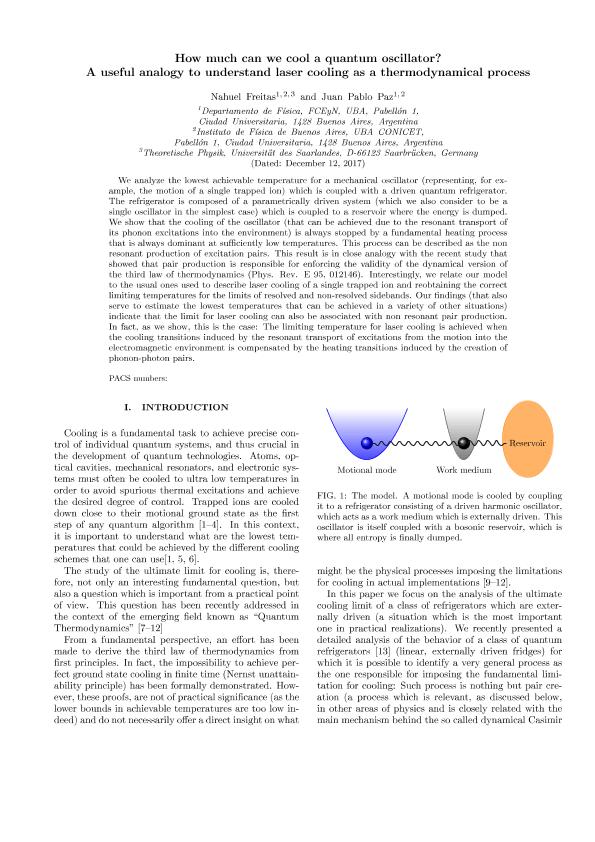Artículo
Cooling a quantum oscillator: A useful analogy to understand laser cooling as a thermodynamical process
Fecha de publicación:
03/2018
Editorial:
American Physical Society
Revista:
Physical Review A: Atomic, Molecular and Optical Physics
ISSN:
1050-2947
Idioma:
Inglés
Tipo de recurso:
Artículo publicado
Clasificación temática:
Resumen
We analyze the lowest achievable temperature for a mechanical oscillator coupled with a quantum refrigerator composed of a parametrically driven system that is in contact with a bosonic reservoir where the energy is dumped. We show that the cooling of the oscillator (achieved by the resonant transport of its phonon excitations into the environment) is always stopped by a fundamental heating process that is dominant at sufficiently low temperatures. This process can be described as the nonresonant production of excitation pairs. This result is in close analogy with the recent study that showed that pair production is responsible for enforcing the validity of the dynamical version of the third law of thermodynamics [Phys. Rev. E 95, 012146 (2017)]. Interestingly, we relate our model to the ones used to describe laser cooling of a single trapped ion reobtaining the correct limiting temperatures for the regimes of resolved and nonresolved sidebands. We show that the limiting temperature for laser cooling is achieved when the cooling transitions induced by the resonant transport of excitations from the motion into the electromagnetic environment is compensated by the heating transitions induced by the creation of phonon-photon pairs.
Palabras clave:
QUANTUM THERMODYNAMICS
,
LASER COOLING
,
QUANTUM OPEN SYSTEMS
Archivos asociados
Licencia
Identificadores
Colecciones
Articulos(IFIBA)
Articulos de INST.DE FISICA DE BUENOS AIRES
Articulos de INST.DE FISICA DE BUENOS AIRES
Citación
Freitas, José Nahuel; Paz, Juan Pablo; Cooling a quantum oscillator: A useful analogy to understand laser cooling as a thermodynamical process; American Physical Society; Physical Review A: Atomic, Molecular and Optical Physics; 97; 3-2018; 32104-32119
Compartir
Altmétricas




